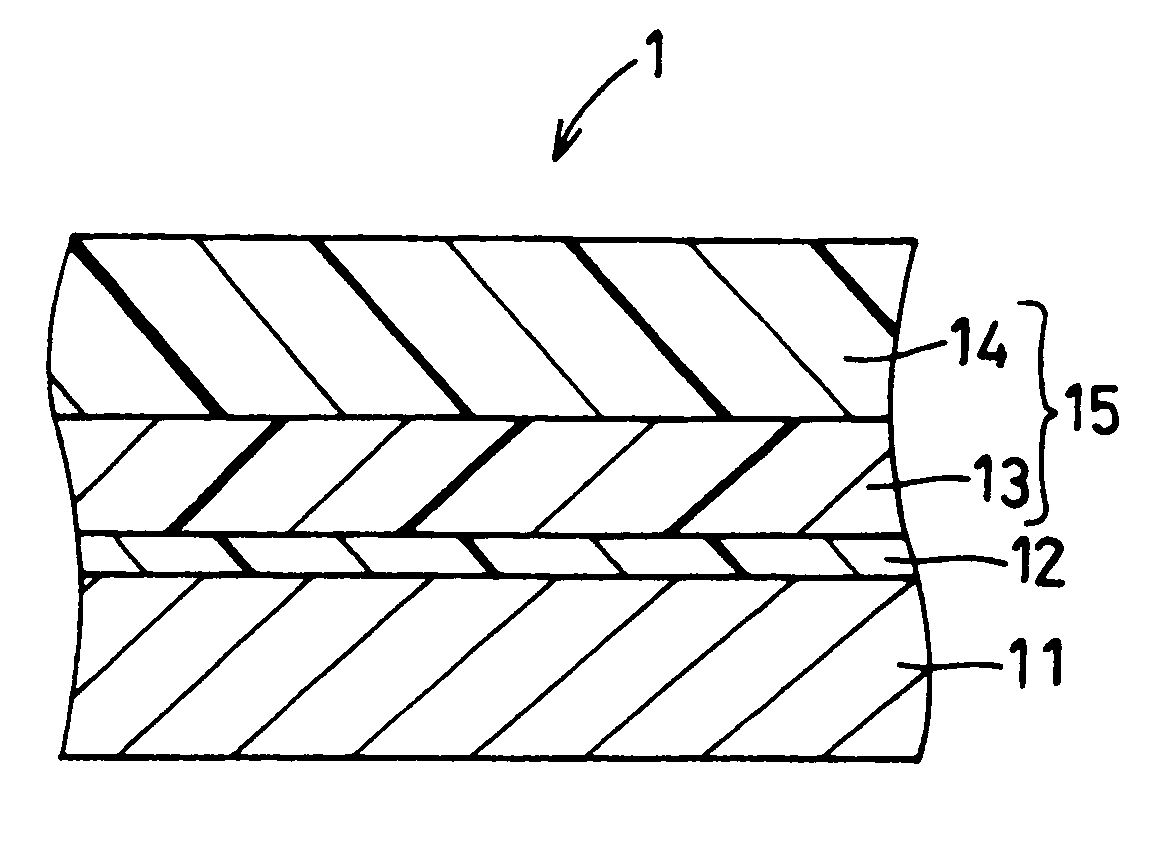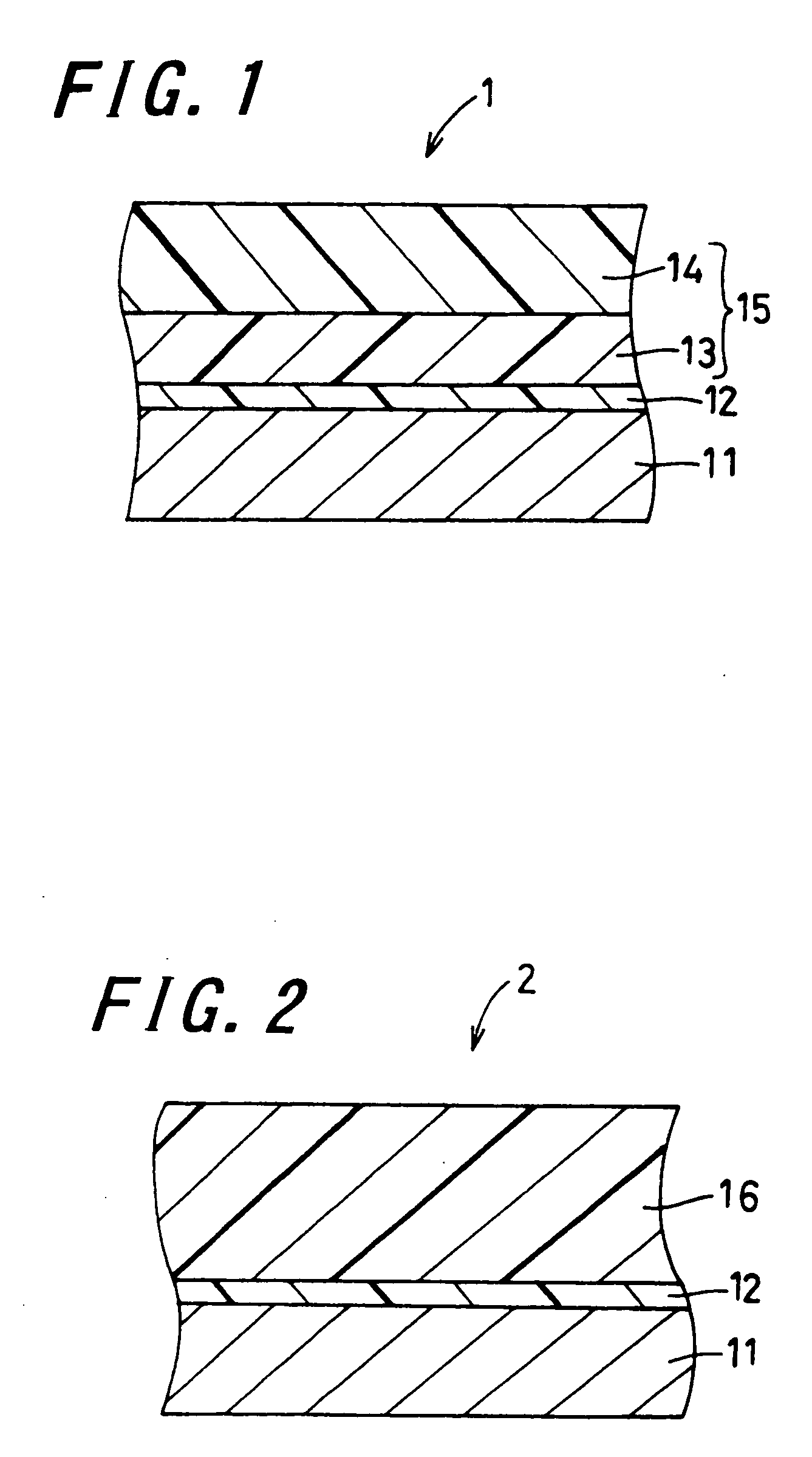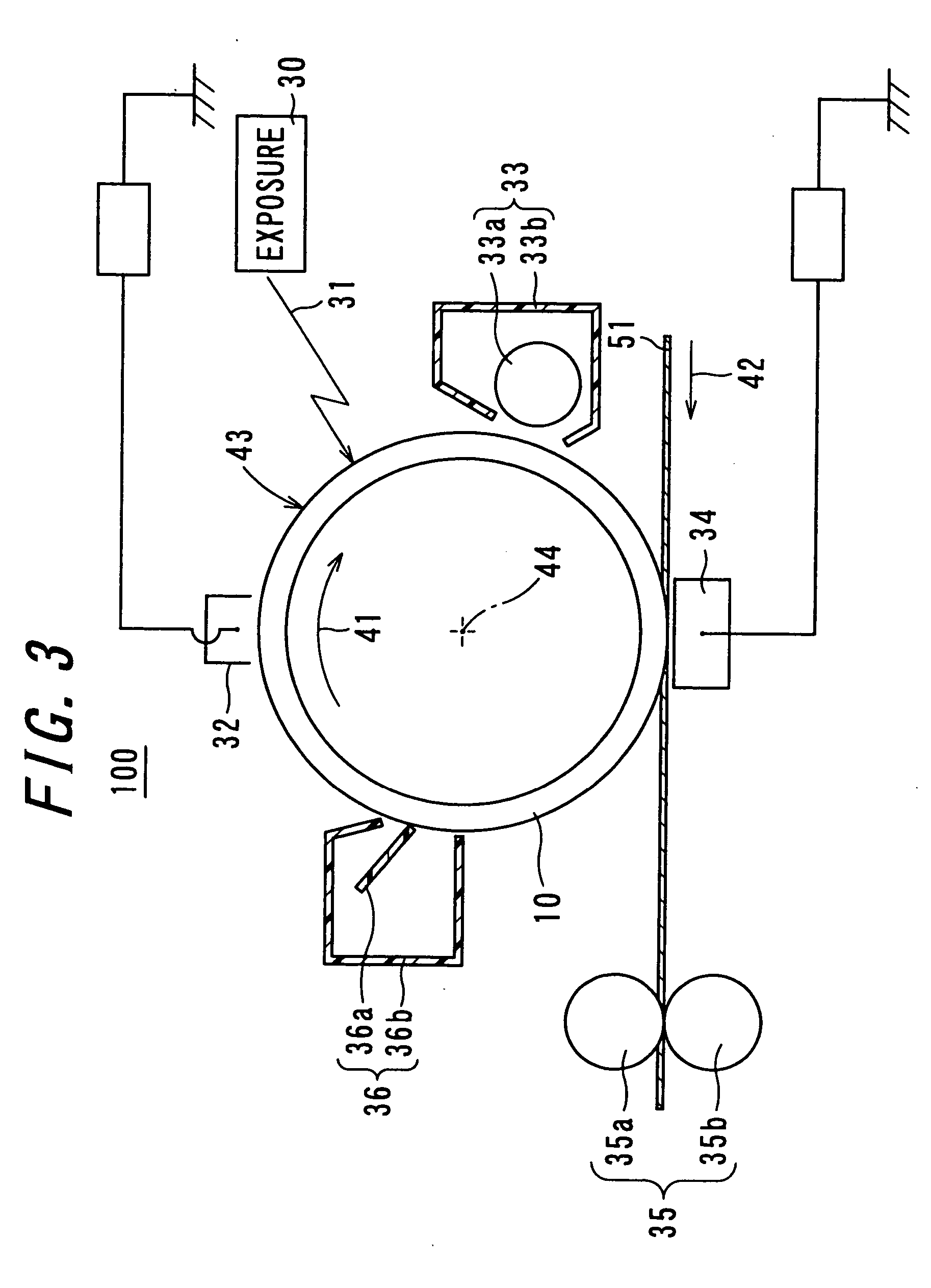Electrophotographic photoreceptor and image forming apparatus provided with the same
a photoreceptor and photoreceptor technology, applied in the direction of electrographic process apparatus, instruments, optics, etc., can solve the problems of poor plasticity, high production cost, difficult photosensitive layer formation, etc., and achieve good oxidizing gas resistance, good electric properties, and good chargeability.
- Summary
- Abstract
- Description
- Claims
- Application Information
AI Technical Summary
Benefits of technology
Problems solved by technology
Method used
Image
Examples
production examples
[0141] In the following Examples and Comparative Examples, an enamine compound expressed by the following structural formula (3a) was used as the charge transporting substance.
[0142] A method for producing the enamine compound expressed by the structural formula (3a) is described below.
[Production of Enamine Compound Expressed by Structural Formula (3a)]
production example 1-1
Production of Enamine Intermediate
[0143] 4.9 g (1.0 molar equivalent) of N-(p-methoxyphenyl)-α-naphthylamine expressed by the following structural formula (4), 4.1 g (1.05 molar equivalents) of diphenylacetaldehyde expressed by the following structural formula (5), and 46 mg (0.01 molar equivalents) of DL-10-camphorsulfonic acid were added to 100 ml of toluene and heated, and this was reacted for 6 hours while water produced as a side product was removed out of the system azeotropically with toluene. After the reaction, the reaction solution was concentrated to about 1 / 10, and gradually and dropwise added to 100 ml of hexane stirred vigorously to thereby form a crystal. The crystal thus formed was taken out through filtration, and washed with cold ethanol to obtain 7.9 g of a pale yellow powdery compound.
[0144] The resulting compound was analyzed through liquid chromatography-mass spectrometry (LC-MS), which gave a peak at 428.5 corresponding to a molecular ion [M+H]+ of an enami...
production example 1-2
Production of Enamine-Aldehyde Intermediate
[0146] 3.4 g (1.2 molar equivalents) of phosphorus oxychloride was gradually added to 100 ml of anhydrous N,N-dimethylformamide (DMF) with cooling with ice, and stirred for about 30 minutes to prepare a Filth-Mayer reagent. With cooling with ice, 7.9 g (1.0 molar equivalent) of the enamine intermediate expressed by the structural formula (6) obtained in Production Example 1-1 was gradually added to the solution. Next, this was gradually heated so as to elevate the reaction temperature up to 80° C., and this was stirred for 3 hours while still heated and kept at 80° C. After the reaction, the reaction solution was left cooled, and gradually added to 800 ml of a cooled, aqueous 4 N sodium hydroxide solution to form a precipitate. The resulting precipitate was taken out through filtration, fully washed with water, and recrystallized from a mixed solvent of ethanol and ethyl acetate to obtain 7.2 g of an yellow powdery compound.
[0147] The res...
PUM
 Login to View More
Login to View More Abstract
Description
Claims
Application Information
 Login to View More
Login to View More - R&D
- Intellectual Property
- Life Sciences
- Materials
- Tech Scout
- Unparalleled Data Quality
- Higher Quality Content
- 60% Fewer Hallucinations
Browse by: Latest US Patents, China's latest patents, Technical Efficacy Thesaurus, Application Domain, Technology Topic, Popular Technical Reports.
© 2025 PatSnap. All rights reserved.Legal|Privacy policy|Modern Slavery Act Transparency Statement|Sitemap|About US| Contact US: help@patsnap.com



